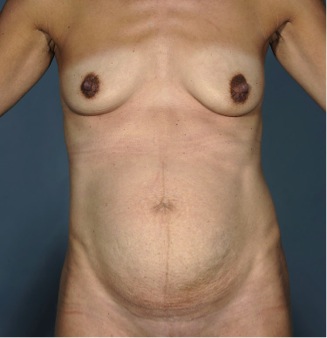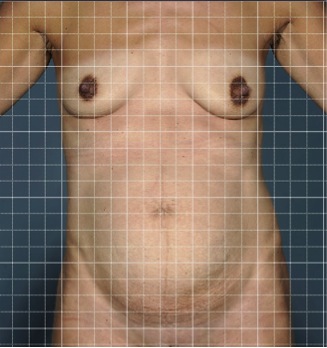Hip Asymmetry: Implications in Abdominal Contour Surgery
Munique Maia1, Lauren Shikowitz-Behr2, Alan Matarasso3.
1Harvard Medical School - Beth Israel Deaconess Medical Center, Boston, MA, USA, 2Hofstra-Northwell School of Medicine, New Hyde Park, NY, USA, 3Manhattan Eye, Ear and Throat Hospital, 210 East 64th Street, NY, USA.
BACKGROUND:
Asymmetry is a known phenomenon in the human body and has been analyzed in multiple areas including the face, breasts, and trunk. Nonetheless, asymmetry of the hips and its implication in body contouring procedures has not yet been reported. Hip asymmetry is common in the general population and may account for uneven abdominoplasty scar and the apparent discrepancies in volume following liposuction of the hips and flanks. The ASIS or iliac crests are often used as landmarks for incision and umbilicus placement. It is crucial to analyze the area preoperatively for proper operative planning and discuss the presence of asymmetry with patients. The goal of this study was to determine the presence of hip asymmetry in healthy females presenting for abdominal contour surgery.
METHODS:
Analysis of preoperative standardized photographs of 100 healthy female patients presenting for abdominoplasty was performed by three independent plastic surgeons (Figure 1). They were asked to evaluate for hip asymmetry, and when present, determined which side was higher. Adobe Photoshop CS2 was also used to objectively measure hip asymmetry. Patient demographics were collected. Patients were females with no known history of hip abnormalities. Age range 17-64 (average 43.6). BMI 16-47 (average 23.6).
RESULTS:
At least 2 plastic surgeons found asymmetries in 90% of patients. The surgeons noted discrepancies in hip height in 93%, 82% and 63% of patients, averaging 79%. The objective data showed that 93% of patients have hip asymmetry, and the left hip was higher in the majority of patients, 58%.
CONCLUSION.
The results showed that the majority of patients who present for abdominal contour surgery have asymmetric hips. Patients are usually unaware of the unevenness of their own hips, however, they often notice postoperative discrepancies in scar height after abdominoplasty or volume differences after liposuction. Table 1 summarizes the importance of assessing hip height and obvious volume discrepancies preoperatively.
Hip asymmetry has become apparent to the senior author, and as a result he utilizes photographic grids as a tool to help identify asymmetries during the preoperative consultation (Figure 2). In the operating room, a crisscross suture technique is used to determine ideal scar placement. Evaluation of preoperative asymmetries is a critical part of the consultation and should be adopted by plastic surgeons performing abdominal contour surgeries. Detailed hip analysis aids in the management of patient expectations, helps with umbilicus placement and mitigates medical-legal issues.
Figure 1. Standardized preoperative photograph 
Table 1. Importance of hip asymmetry in abdominal contour
| Detailed hip analysis |
| Promotes patient education Aids with management of patient expectations Facilitates operative planning Prevents uneven scar Helps with umbilicus placement Avoids volume discrepancies after liposuction Mitigate medical-legal issues |
Figure 2. Preoperative photograph with grids

Back to 2017 Program




